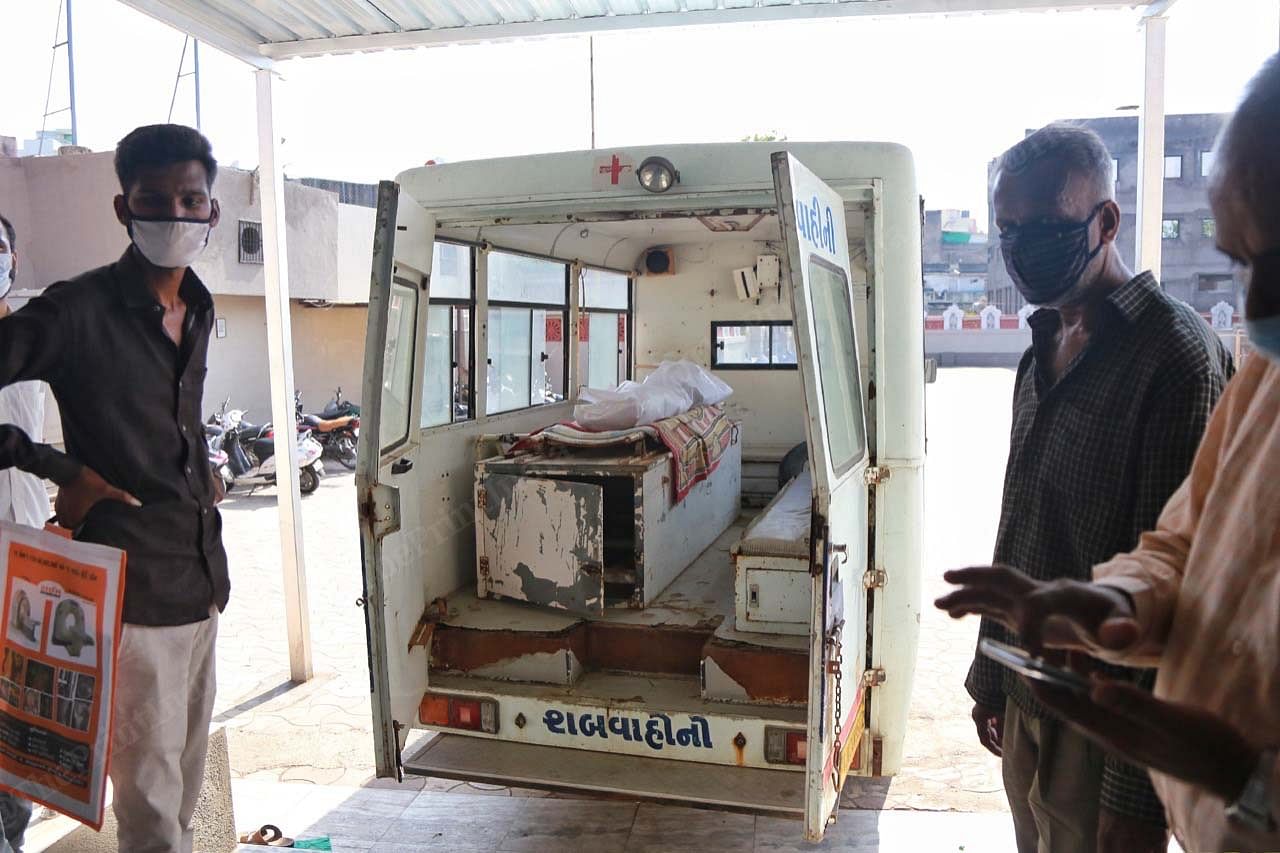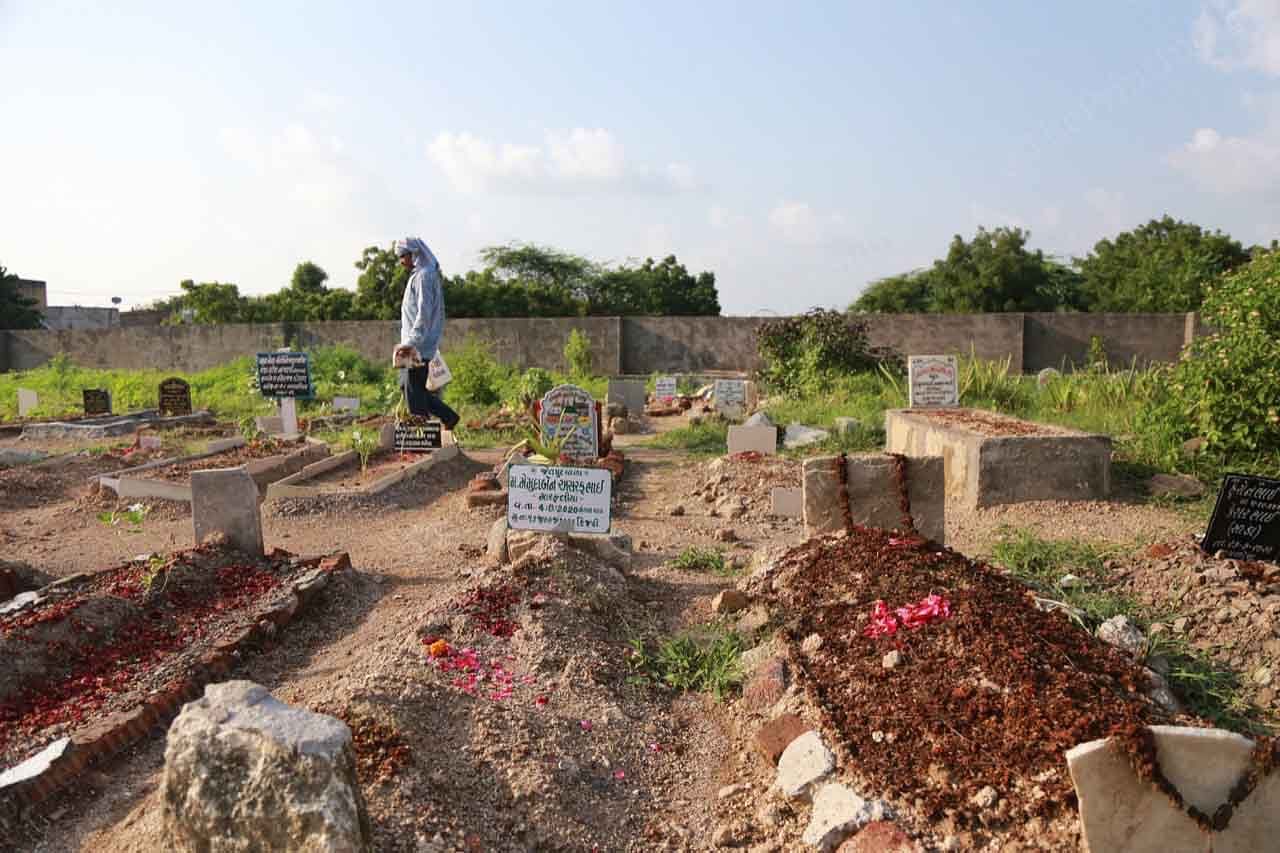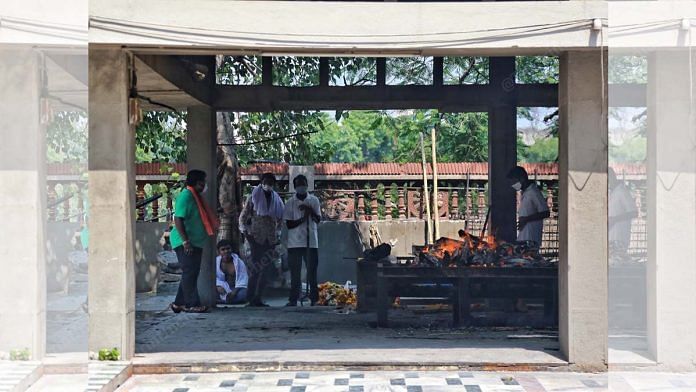Rajkot: How many people have died of Covid-19 in Gujarat’s Rajkot, the home city of Chief Minister Vijay Rupani? The answer depends on who you ask. According to the Rajkot Municipal Corporation, 94 people in the city have died of the coronavirus as of 25 September, while the state government data pegs that number at 131 people.
The city’s crematoriums and burial grounds, however, have had to deal with far more bodies than they did in the same period last year, raising suspicions of the administration underreporting deaths.
According to data from the four crematoriums and six burial grounds across Rajkot, 1,247 Covid-related bodies have been cremated or buried so far, way above the official figures.
“According to official figures, the month of August saw 1,736 overall deaths and September saw 2,087 deaths,” an official working with the corporation told ThePrint. “We are officially not permitted to share the cause of death right now, but I can tell you that the number of deaths this year is much higher than that of last year.”
Rajkot Municipal Commissioner Udit Agrawal, however, denied suggestions that the administration was under-reporting deaths. “Since we are not giving live numbers, there will always be a certain number of cases that will be reported the next day,” he said. “We are disseminating information as it is. Why will we conceal numbers? At the end of the day we want what’s best for the people of the city.”
Also read: Lack of public discipline behind Rajkot Covid spike and no mask, distancing at Golden Temple
Crematorium rush hours
At the Ramnathpara Mukti Dham, the city’s largest crematorium, the facility has gas burials, firewood burning and electric cremations but those looking to perform the last rites have to wait for anywhere between one to three hours, depending on the rush.
Residents say the maximum rush happens after 6 pm because that is when the nearby Rajkot Civil Hospital releases most of its bodies.
“Everyday a large number of bodies wrapped in white plastic come here. Most of the bodies are cremated in the electric facility for the safety of people and to reduce contamination,” Shyambhai Bankaniya, the corporation incharge running the facility, told ThePrint.
“Our wood intake has doubled within the last six months and we have received more bodies until September this year than we did in all of last year,” he added.
Crematorium records show that so far in 2020, as of 21 September, Ramnathpara has cremated about 3,000 bodies. In contrast, it cremated 1,876 bodies in all of 2019.
The crematorium handled 475 deaths in July 2020 as opposed to 270 deaths in July 2019, 1,035 in August 2020 as compared to 301 the previous August, and 417 deaths as of 21 September 2020 as opposed to 314 deaths last September.
These include 102 Covid-related deaths in July, 334 in August and 223 in September this year. The crematorium alone has handled 659 bodies related to Covid-19 in the last three months.

Similar story across city
It is a similar story across the three other crematoriums in Rajkot.
At the Mota Mava crematorium, which is on the outskirts of the city, bodies come from the nearby villages and districts of Jamnagar, Morbi, Porbandar, Junagadh and Gondal.
“There is a three-hour waiting period to get a body cremated here. The number of bodies coming here has increased two-fold as compared to last year,” said a caretaker of the crematorium who did not want to be named.
The Mota Mava crematorium has so far handled 180 deaths in July, of which 70 were Covid related; 267 deaths in August, 65 of which were of Covid deaths and 295 deaths as of 23 September, 93 of which were of Covid patients. In all, over the past three months, 228 Covid-related bodies have been cremated here.
At the Mahudi crematorium in the city, as of 15 September, there have been 65 Covid-related bodies while that number is 283 for the Sorathiya Wadi crematorium.
Also read: BJP rally, social gatherings during Janmashtami & unlock — Why Rajkot is seeing a Covid spike
No better in kabristans
The burial grounds of the city too have seen a similar spike in the number of deaths. The city has six kabristans — the Popatpara Kabristan, Sunni Muslim Sipahi Kabristan, Khamosh Colony Kabristan, Halisha Kabristan, Saddar Kabristan and the Greenline Chowkdi Kabristan.
At the Popatpara Kabristan, which is the largest government-run burial ground for Muslims, there has been the burial of 56 Covid-related bodies this year.

The months of July, August and September, have seen 84 burials so far.
“The number of deaths (as compared to last year) has definitely increased,” said an undertaker at the kabristan. “We wear a PPE kit and dig a pit about 6 feet deep in order to bury Covid bodies. Majority of bodies sent here are of those who come to Rajkot for treatment, from places like Morbi, Jamnagar, Gondal and Junagadh.”
As of 15 September the rest of the burial grounds in the city too saw 54 Covid-related burials.
What is peculiar is that the coroners in both the burial grounds and crematoriums are not specifically told if a body is Covid positive or a Covid suspect.
Shyam Bankaniya, who manages the Ramnathpara Mukti Dham, said, “Since we are supposed to treat both kinds of bodies alike and they come wrapped in white plastic, we cannot differentiate between a suspect and positive body. We count these bodies as Covid bodies. Sometimes the family members tell us whether they were positive or not, but the hospital authorities do not specify.”
But Dr Atul Pandya, the vice-president of Indian Medical Association (IMA) and a member of the Gujarat Covid-19 task force insisted that the state government has been complying with guidelines issued by the Indian Council for Medical Research (ICMR).
“The media here has been writing whatever they feel like. What they don’t realise is that we as doctors are trying our best to save lives. While they are alive it is our duty to take care of their needs but after passing away patients are not our responsibility,” he said. “The numbers that the state government gives are accurate and we abide by all the ICMR protocols when it comes to Covid patients.”
Also read: How this IAS officer got India’s first water train to save Gujarat’s Rajkot from drought




Our relative passed away possibly due to Covid in bhuj Gujarat and they classified it as Covid inconclusive. Is Gujarat managing nos?